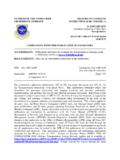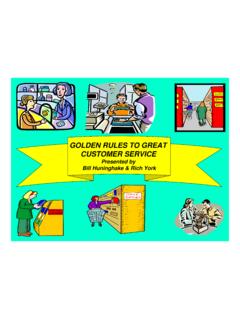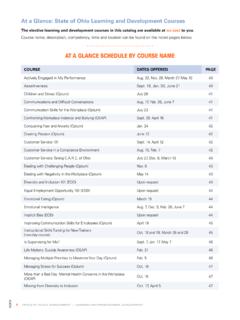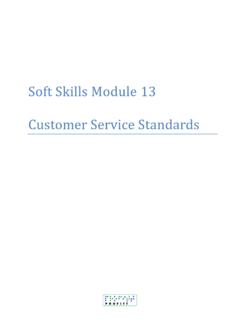Transcription of Customer Service Module
1 - 1 - W A S H I N G T O N S T A T E D E PA R T M E N T O F H E A L T H W IC P R O G R A M Customer Service training 2 This institution is an equal opportunity provider. Washington WIC Nutrition Program does not discriminate. For persons with disabilities, this document is available on request in other formats. To submit a request, please call 1-800-525-0127 (TDD/TTY 1-800-833-6388). DOH 960-140 January 2012 3 Learning Objectives Upon completion of this Module , trainees will have: Identified what customers commonly expect from Customer Service providers. Noted two ways to meet and possibly exceed customers expectations. Prepared for dealing with negative situations in the clinic by reviewing steps to take when confronted with difficult clients or situations.
2 Practiced changing negative responses into positive responses. Taken steps to build their nerve to serve by exploring ways of handling difficult situations that could occur in the clinic. 4 WIC Customer Service WIC recognizes the importance of Customer Service . The manner in which Customer Service is provided impacts how effective WIC staff can be at improving the lifelong health and nutrition of the clients we serve. When WIC staff provide good Customer Service , clients will likely continue to participate on the program and get the most from the benefits WIC has to offer including nutrition education, referrals, and access to food. Messages Customer Service convey The manner in which we provide Customer Service should convey these messages to our clients: WIC cares WIC is here to help You are important to us We want to serve you We know you care about your family You have choices Let s work together We believe in you Attitude of Service To convey these messages, WIC staff provide services to clients in a positive way and demonstrate an attitude of Service .
3 This attitude is not something you put on and take off. Someone with an attitude of Service tends to naturally want to help others whether they are at work, or not. Section 1 - 5 - Learning from experiences We are customers of utility companies, grocery stores, medical facilities, and more. Our personal experiences from receiving Customer Service can help remind us about the way Customer Service should and should not be provided, based on whether our expectations were met and how we were treated. Activity 2 Part 1: A lesson learned from an unsatisfactory experience 1. Think about a situation when you were provided with unsatisfactory Customer Service . 2. Answer the following questions: What type of assistance were you seeking from the Customer Service provider?
4 What actions were you expecting the person to take? How do you expect to be treated? How did you feel when your expectations were not met? 3. What could this Customer Service provider have done differently to change the unsatisfactory situation into a satisfactory one? 4. What lesson does this experience teach you about providing Customer Service ? Activity 1: Can you recognize an attitude of Service ? Circle any of the following situations you have ever witnessed. Someone: Holds a door open for someone else Picks up something dropped by another person Allows another person in line to cut in front of them If have witnessed any of these before, you have recognized an attitude of Service . Do you have an attitude of Service ? 6 Customer satisfaction Meeting customers expectations results in Customer satisfaction.
5 How do we know what our customers expect? There are common expectations that all customers have about the way they should be treated and the actions they expect the Customer Service provider to take to assist them. Activity 2 Part 2: A lesson learned from an excellent Customer Service experience 1. Think about a time when you were provided with excellent Customer Service . 2. Answer the following questions: What type of assistance were you seeking from the Customer Service provider? What actions were you expecting the person to take? How do you expect to be treated? How did you feel when your expectations were met? 3. What lesson does this experience teach you about providing Customer Service ? Activity 3: What customers want and expect 1.
6 Review your answers from Activity 2 parts 1 and 2. 2. Based on your experiences, you may be able to identify what customers in general expect from those serving them, and how they want to be treated. 3. On the next page, place an X next to the things you think customers, in general, want and expect when being provided Customer Service . - 7 - Customers expect to be: Customers expect Customer Service providers to be: Listened to Taken seriously Shown empathy Treated with respect Attended to immediately Helped, especially when trying to solve a problem Offered choices Appreciated Courteous Knowledgeable Caring Reliable Concerned Helpful Honest Interested Non-judgmental Respectful It starts with respect.
7 If you respect the Customer as a human being, and truly honor their right to be treated fairly and honestly, every thing else is much easier. Doug Smith 8 How to meet (and even exceed) Customer expectations To meet and even exceed customers expectations, routinely provide good Customer Service . Follow these best practices: 1. Acknowledge clients when they arrive Clients understand staff are busy, but still want to be acknowledged. Even when you are helping another client in person or on the phone, acknowledge the arrival of clients. This may be done simply by smiling and gesturing that you will be with her shortly. 2. Find out what your customers expects Greet the client with a smile and find out what the Customer expects by using a simple phrase, Hi, how can I help you today?
8 This also conveys your attitude of Service . 3. Recognize how the client might feel Our customers can feel overwhelmed with the amount of information we provide. They may be worried they will not be able to remember everything. Be empathetic, recognize how the client might be feeling, and offer assistance. Example: Using your checks the first time can be confusing and can feel overwhelming. I can offer some helpful tips, if you would like. 4. Put yourself in the client s shoes Clients often feel comfortable sharing exciting events happening in their lives. Other times, clients need help dealing with a difficult situation. When talking with a client, learn how they feel and consider how you would feel if you were in that situation. 5. Listen, without interrupting or finishing the sentence.
9 Let the Customer talk. Listen attentively. Simply focus on what the person is telling you. You should not interrupt or finish the sentence for the person. 9 6. Check for understanding by using reflective listening skills. Make sure you understand what the client is asking for and how you can help her. In turn, make sure clients understand the information that you are providing. Use reflective listening skills to help. Start by stating that you want to make sure that you understand. Next, reflect back what it is you think the person asked about or told you. Finish by asking if you understood correctly. The Customer will assure you have understood or will provide more information. Example: Let me make sure I understand. Your household s income is from your husband s employment and these are his pay stubs.
10 You baby-sit for your neighbor twice a week, but she does not pay you. Instead, she provides you with transportation to school and to the store twice a week. Did I get that right? 7. Use body language that shows respect. In face to face conversations, use eye contact and avoid distractions. Rolling your eyes, huffing, and continuing to do things without looking at the client are all examples of disrespectful body language. Additional information about body language is included in section 4. Although clients on the phone cannot see your body language, smiling elevates your voice and your tone of voice will be more natural and friendly sounding. Try smiling during phone conversations. 8. Take responsibility for handling the issue or request. Taking responsibility might be the most valued aspect of Customer Service .
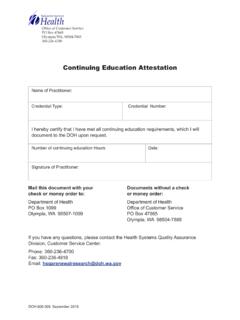

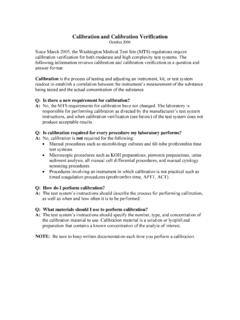
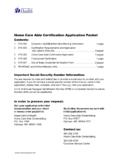

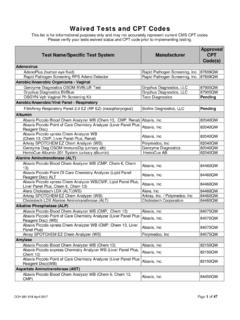
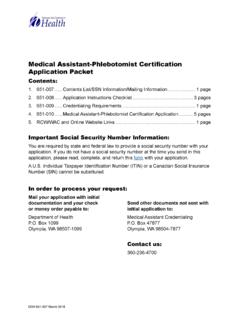
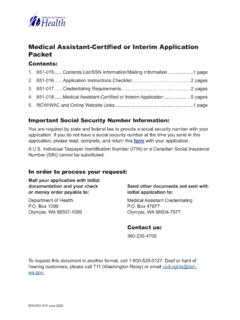

![Welcome [das.ohio.gov]](/cache/preview/0/0/c/4/8/b/9/e/thumb-00c48b9eaa84074935edd1fd5f6e5635.jpg)
